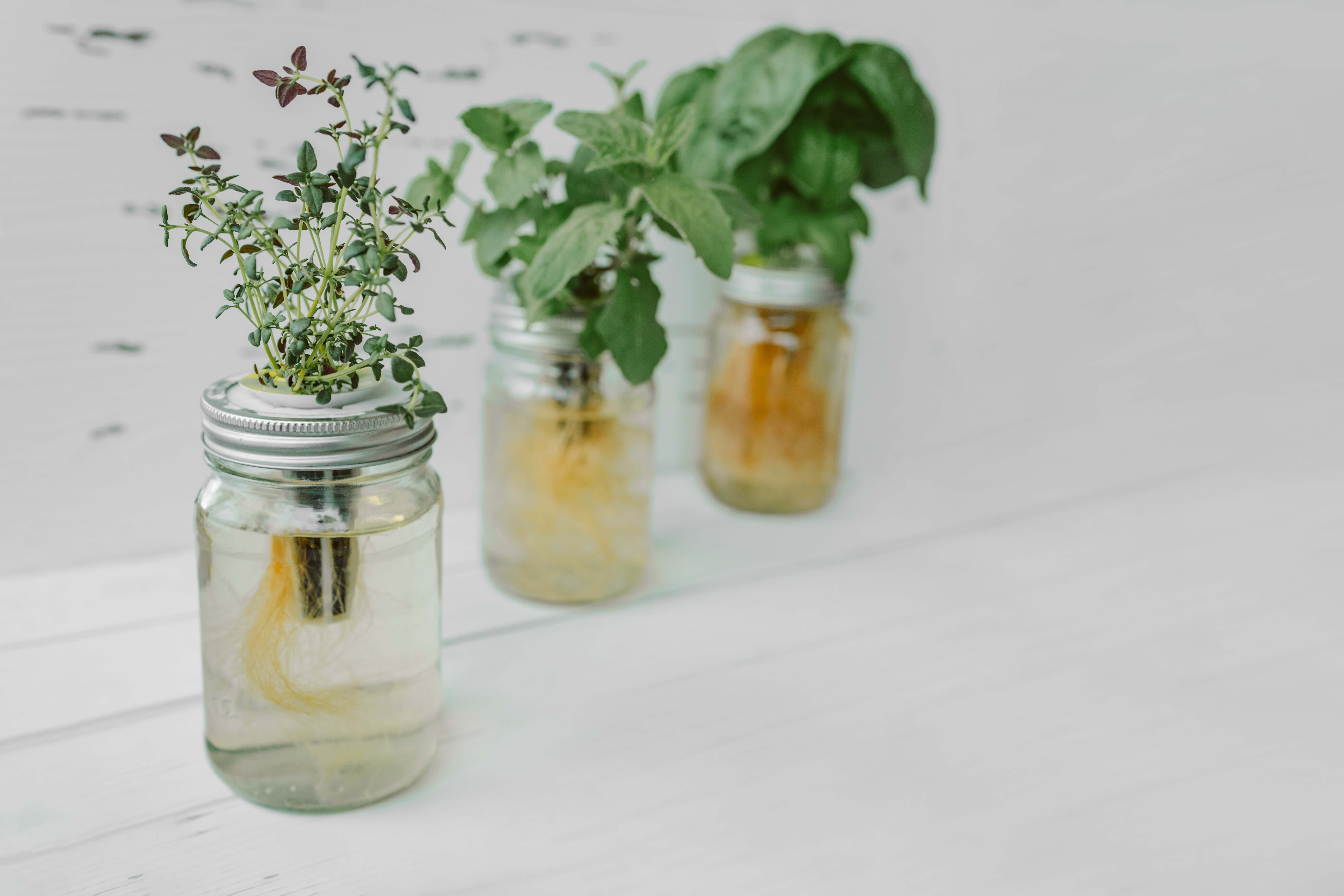Mason Jar Hydroponics
Have you ever wanted to try growing plants hydroponically? Based on the Kratky method, mason jar hydroponics is a great way to get started. The method is simple and very friendly for beginners.
We will discuss what you will need to get started and best practices for growing hydroponic plants.

How Does the Kratky Mason Jar Hydroponics Work?
The mason jar hydroponics works the same as any other container for the Kratky hydroponics, (click the link for the detailed explanation) and is basically a more simple version of traditional hydroponics: The plants roots feed on the water / nutrients in the jar, and gets oxygen from roots it grows in the gap created as the water is used up.
The plant will need regular access to sunlight or daylight, or a suitable artificial source of light which can be purchased at most hydroponic specialty stores. Window sills are a perfect spot, so long as it does not get too cold for the plant during winter months.
What is the best plant to start with?
Herbs are one of the best plants to start with because not only will you get to grow them indoors using minimal resources, but you will have a culinary delight at your finger tips!
We would recommend basil in particular because they are easy to grow, smell great, and will keep producing leaves as you cut them.
In addition, you don't need to start from seed. You can simply take a cutting of the stem and leaf (called "propagating"), pop that in to your mason jar net pot and off is grows.
Lettuce can be another good plant to try, however, you will likely have to start it from seed in a moist paper towel to start with. Any herb or green which will not out grow the mason jar will work, or so long as you can cut it back regularly.
What Will You Need to Grow Plants in a Mason Jar?
Her is a list of the components you will need to assemble, before you embark on your mason jar hydroponics garden of eating:
- Basil seeds or a plant cutting
- Root booster for plant cutting method (propagation).
- Wide mouth mason jars. We recommend using one with an amber or green color to prevent algae growth.
- Net pots (3 inches)
- Peat pellets
- Liquid Fertilizer / Plant Food
- Distilled water
- Grow lights (optional if you don't have access to sunlight)
- Isopropyl alcohol or hydrogen peroxide to keep grow area sterile.
- Ph test strips
For a detailed description of how to start the garden, click on the Kratky Method of Hydroponics page and follow the steps there.
Preventing Root Rot
You can avoid root rot by making sure there is breathing room in your jar for the roots. You do not want them to be completely submerged. It would help if you also cleaned out the mason jars in your Kratky system between harvests.
A Word On Basil...
Basil is a member of the prolific mint family, Lamiaceae. Its common scientific name is Ocimum Basilicum. The defining characteristic of the mint family plants is the square stem and opposite leaves. Opposite leaves mean that there are two sets of leaves that alternate sides up the plant's stem.
Basil is an herbaceous flowering plant. It will grow white, purple, or pink flowers. The flowers are edible, like the leaves and stems are edible.
It is an annual plant which means it will die once it flowers and goes to seed. If the conditions are right (i.e., warm enough), it may sometimes re-seed and grow the following year again, making it somewhat perennial.
How Do You Propagate Basil?
To grow basil from a cutting is to propagate it. Cut from the top of the plant where there is new growth. You want there to be about 4 sets of leaves. Then, remove the bottom leaves, leaving only the top two sets of leaves, the youngest. Ideally, add a root booster to the stem before planting in peat pellets. Although so long as the stem is in contact with the nutrient water, it should still grow.
How Long Does it Take for Plant to Reach a Harvest State?
Basil is an ideal plant to grow hydroponically because of its quick growth from seed to harvest. It can take as little as 28 days. You may be able to harvest before this time by topping off; watch the leaf count mentioned above.
Basil can last for about a week in the fridge after harvesting before it starts turning black. Store it in a plastic bag or container with a paper towel wrapped around it.
Or you can freeze it. There are two ways to freeze basil. One way is to take already dried basil and store it in a container in the freezer. You can freeze fresh basil by adding olive oil to it and then placing it in the freezer in a container or plastic bag. Do not freeze fresh basil without first adding oil to it.
What if My Basil Starts to Flower?
your basil starts to flower, do not worry. As long as you catch it early, the plant will not start producing seeds. If a plant starts to produce seeds, it is at the end of its life cycle.
If you are regularly pruning, you should be able to harvest basil year-round without it going to seed. If you see flowers, cut them off. You can even eat them. We recommend adding them to a salad.
HOME > Hydroponic Gardening > Mason Jar Hydroponics (This Page)